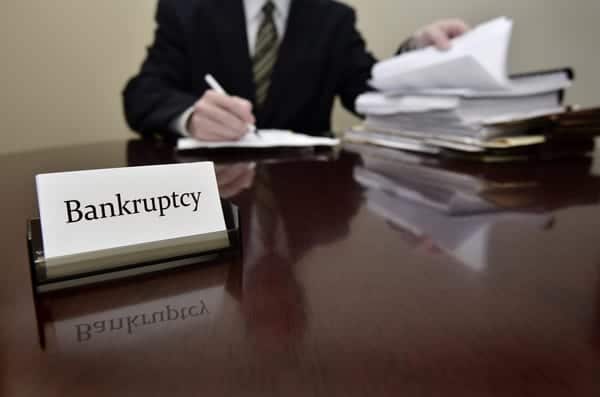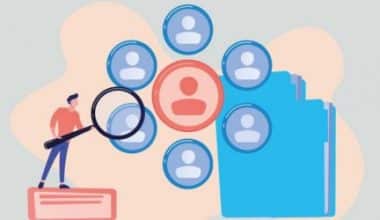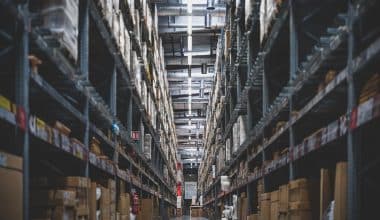Bankruptcy is a legal process that provides individuals and businesses with relief from their debts. It is a way to start fresh and move forward financially. Bankruptcy can be a complicated and confusing process, but understanding how it works is important for those who are considering it as an option. In this article, we’ll be looking at how bankruptcies work for companies in Canada and UK.
How bankruptcies work in Canada
Bankruptcy in Canada is a legal process that provides individuals and businesses with relief from their debts. The process is governed by the Bankruptcy and Insolvency Act (BIA) and is administered by a licensed insolvency trustee (LIT).
To file for bankruptcy in Canada, an individual must first meet with a LIT. The LIT will review their financial situation and advise them on their options. Which may include bankruptcy, a consumer proposal, or other debt management solutions.
If the individual decides to file for bankruptcy, they must provide a list of their creditors and the amounts owed. They will also the LIT with details of their assets and income. The LIT will use this information to prepare the necessary paperwork and file a bankruptcy petition with the Office of the Superintendent of Bankruptcy.
Once the petition is filed, an automatic stay of proceedings is put in place. This will however stop most collection actions by creditors. The individual will also have to attend two credit counseling sessions during the bankruptcy process.
Understanding how bankruptcies work in Canada
The length of bankruptcy in Canada depends on several factors, including the individual’s income, the value of their assets, and the number of their debts. In most cases, a first-time bankrupt who has no surplus income will be discharged from bankruptcy in nine months. If the individual has surplus income, they have to make payments for a longer period of time. This typically takes up to 21 months.
During the bankruptcy, the LIT will take possession of the individual’s non-exempt assets and sell them to pay off their creditors. Exempt assets, such as household goods and some types of pensions, are protected and cannot be seized by the LIT. In most cases, the individual is allowed to keep their vehicle, provided the equity does not exceed a certain amount.
Once the bankruptcy is complete, the individual will be discharged from their debts, with some exceptions, such as student loans that are less than seven years old. The discharge releases the individual from the obligation to pay their debts and provides them with a fresh financial start.
How bankruptcies work in the UK
In the UK, bankruptcy is a legal process that allows individuals or businesses that are unable to pay their debts to seek relief from their creditors. Bankruptcy is governed by the Insolvency Act 1986 and is administered by the Insolvency Service.
To file for bankruptcy in the UK, an individual must first fill out an online application with the Insolvency Service. They must also pay a fee, which is currently £680. After submitting the application, the Insolvency Service makes a decision within 28 days on whether the individual qualifies for bankruptcy.
If the application is approved, a trustee will be appointed to manage the bankruptcy process. The trustee will take control of the individual’s assets, including their property and any income, and use them to pay off their creditors. In some cases, the trustee may sell the individual’s assets to pay off their debts.
During the bankruptcy process, the individual needs to cooperate with the trustee. The individual will also provide the trustee with all necessary information about their financial situation. The Individual may also need to attend interviews or meetings with the trustee.
Understanding how bankruptcies work in the UK
Bankruptcy in the UK typically lasts for a period of 12 months. During this time, the individual’s assets and income are used to pay off their creditors. However, any remaining debts are discharged at the end of the 12-month period.
In addition to bankruptcy, there are other forms of insolvency in the UK, including individual voluntary arrangements (IVAs) and debt relief orders (DROs). IVAs allow individuals to negotiate with their creditors to pay off their debts over a period of time, while DROs are designed for individuals with low levels of debt and little to no assets.
It is important for individuals considering bankruptcy or other forms of insolvency to seek professional advice from a licensed insolvency practitioner. They can provide guidance on the best course of action for their specific financial situation and help them navigate the insolvency process.
How bankruptcies work for Companies
Bankruptcy for companies, also known as corporate bankruptcy, is a legal process that allows a company to seek relief from its debts when it is no longer able to meet its financial obligations. The process is governed by the Companies Act 2006 and is typically initiated by the directors of the company.
There are two main types of corporate bankruptcy in the US: Chapter 7 liquidation and Chapter 11 administration. Liquidation is the process of winding up the company’s affairs and distributing its assets to creditors. Administration, on the other hand, is a process to rescue the company by restructuring its debts and operations.
In the case of liquidation, the process is typically initiated by the directors of the company, who must pass a resolution to wind up the company’s affairs. A liquidator is then appointed to manage the process of selling the company’s assets. The liquidator then distributes the proceeds to its creditors. Afterward, the company will be dissolved once the liquidation process is complete.
In the case of administration, the directors or a creditor of the company initiates the process. An administrator is then appointed to manage the company’s affairs and attempt to rescue it by restructuring its debts and operations. This may involve negotiating with creditors, selling off parts of the business, or finding new investors to inject capital into the company.
Understanding how bankruptcies work for Companies
During the administration process, the company is protected from legal action by its creditors, giving it time to restructure and hopefully avoid liquidation. If the company is unable to be rescued, it may enter into liquidation at the end of the administration process.
Bankruptcy for companies can have serious consequences, including the loss of jobs and the disruption of supply chains. It is important for companies facing financial difficulties to seek professional advice from a licensed insolvency practitioner. A practitioner can provide guidance on the best course of action for their specific situation.
Can you ever recover from bankruptcy?
Yes, it is possible to recover from bankruptcy, but it can be a long and difficult process. In addition to losing assets and lowering credit scores, declaring bankruptcy can make it difficult to get credit in the future. However, with careful financial management and a commitment to rebuilding credit, it is possible to recover from bankruptcy and improve one’s financial situation.
One of the first steps to recovering from bankruptcy is to develop a budget and stick to it. This can involve cutting expenses and finding ways to increase income, such as taking on additional work or starting a side business. It is important to prioritize paying off any remaining debts and building an emergency fund to help avoid financial difficulties.
Another important step in recovering from bankruptcy is to establish good credit habits. This can involve obtaining a secured credit card or other forms of credit and making payments on time and fully. You will also have to avoid taking on more debt than you can comfortably manage.
Rebuilding credit after bankruptcy can be a slow process, but it is possible. Over time, with consistent and responsible credit habits, you can improve your credit scores and gain back access to credit. It may be helpful to work with a financial advisor or credit counselor to develop a plan for rebuilding credit. This will help you in managing finances effectively.
Ultimately, recovery from bankruptcy requires patience, discipline, and a willingness to learn from past financial mistakes. While it may take time, it is possible to recover from bankruptcy and build a strong financial future foundation.
Does your credit go down after bankruptcies?
Yes, declaring bankruptcy can have a negative impact on your credit score. A bankruptcy filing will typically remain on your credit report for a period of six to ten years. This depends on the type of bankruptcy filed.
During this time, your credit score will likely be negatively affected. This is because creditors and lenders see bankruptcy as a major negative event. The bankruptcy filing will show up on your credit report. Making it more difficult to obtain credit or loans, or you may have to pay higher interest rates or fees.
However, it is important to note that the impact of bankruptcy on your credit score will depend on your individual financial circumstances. It will also depend on how you manage your credit and finances after the bankruptcy filing. It is possible to begin rebuilding your credit score after bankruptcy by taking steps such as making on-time payments, using credit responsibly, and keeping credit utilization low.
While declaring bankruptcy can have a negative impact on your credit score. It is not necessarily a permanent mark on your credit history. With responsible financial management and a commitment to rebuilding credit, it is possible to improve your credit score over time and regain access to credit and loans.
What debt follows you after bankruptcies?
The types of debts that follow you after bankruptcy will depend on the type of bankruptcy you file and your individual financial circumstances.
In a Chapter 7 bankruptcy, also known as a “liquidation” bankruptcy, most unsecured debts such as credit card debt, medical bills, and personal loans can be discharged, meaning you are no longer obligated to pay them. However, some types of debt, such as student loans, tax debt, and child support or alimony payments, are generally not dischargeable in bankruptcy and will still need to be paid.
In a Chapter 13 bankruptcy, also known as a “reorganization” bankruptcy, you will be required to pay back some or all of your debts through a court-approved repayment plan. This plan typically lasts three to five years and may include both secured and unsecured debts.
Note that if a debt is discharged in bankruptcy, it may still appear on your credit report for some time. Additionally, while bankruptcy can provide relief from certain types of debt, it can have serious long-term consequences for your credit score and future ability to obtain credit or loans.
While you are considering bankruptcy, it’s important to consult with a licensed bankruptcy attorney and a financial advisor. They will help you to fully understand your options and the potential consequences of filing.
How fast can you recover from bankruptcies?
The speed at which you can recover from bankruptcy will depend on a variety of factors. This could include the type of bankruptcy you filed, your individual financial circumstances, and your commitment to rebuilding your credit and financial health.
In general, the negative impact of bankruptcy on your credit score will diminish over time. A Chapter 7 bankruptcy will remain on your credit report for up to ten years from the date of filing, while a Chapter 13 bankruptcy will remain on your credit report for up to seven years from the date of discharge. It may take years of consistent and responsible credit management to recover from bankruptcy and rebuild a strong credit score.
To speed up the process of recovery from bankruptcy, take steps to rebuild your credit as soon as possible. This may include obtaining a secured credit card, making on-time payments, keeping credit utilization low, and avoiding taking on more debt than you can comfortably manage. Working with a financial advisor or credit counselor can also be helpful in developing a plan for rebuilding credit. As well as managing finances effectively.
Ultimately, the speed at which you can recover from bankruptcy will depend on your individual financial situation. Your commitment to taking the necessary steps to rebuild your credit and financial health. While it may take time, it is possible to recover from bankruptcy and build a strong financial foundation.
In Conclusion
We hope you now understand how Bankruptcies work, knowing it can have serious consequences. This could include a negative impact on credit scores and the ability to obtain credit in the future. It is important for those considering bankruptcy to speak with a qualified attorney and understand all of their options before making a decision. However, for those who are overwhelmed by debt and see no other way out, bankruptcy can provide a fresh start and a path toward financial stability.
- Types of Bankruptcy: For Businesses and Individuals
- BUSINESS CREDIT SCORE: How to Check Your Business Credit Score
- HOW MANY MORTGAGES CAN YOU HAVE: REAL ESTATE INVESTING
- HOW TO FILE BANKRUPTCY: Who Qualifies, What You Need to Know & Guide
- TRADE CREDIT: Definition & Guide to Trade Credit Insurance In UK






